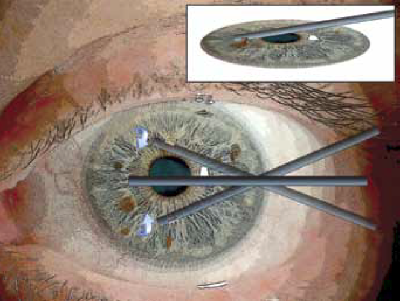Dr. Paul Finger and Dr. Tatyana Milman’s recently published study in the European Journal of Ophthalmology highlights the effectiveness of an innovative minimally invasive biopsy technique.
Biopsy-proven iris melanoma carries a 10.7% risk of metastasis, making a safe method of iris tumor biopsy crucial. Currently, physicians often use fine-needle aspiration or wide-incision iridectomy. However, both techniques have drawbacks.
With fine-needle aspiration, piercing or partially embedding a sharp-edged needle tip into a 0.8-mm thick iris risks cutting the lens, iris blood vessels, and ciliary body. Surgical iridectomy yields the best tissue samples, but involves creating a relatively large surgical wound that must be sutured. This risks astigmatism, an irregular pupil, secondary glare and the need for post-op rehabilitation.
As the new study shows, using a microincision aspiration cutter is a third, minimally invasive option that yields excellent biopsy results while minimizing some of the risks associated with the other two methods.

Microincision aspiration cutter-assisted iris biopsy is a variation of the Finger iridectomy technique developed by Dr. Finger. It uses a single, small corneal incision, which is safer than the larger incision required by wide-incision iridectomy. Dr. Finger explained the significance of this advancement in biopsy techniques for patients:
“Conducting a biopsy through a tiny incision like this means you don’t have to have stitches. Think of it like the developments in back or abdomen surgery over the past few decades. Surgeons used to have to really open the patient up, which often meant more pain and a longer post-op recovery. Then they developed microincisions to conduct surgery. This is the ophthalmic version of those surgical enhancements – a surgery upgrade, if you will.”
In this study, seven patients suspected to have diffuse iris melanoma underwent microincision aspiration cutter-assisted iris biopsy. Five of the patients were ultimately diagnosed with melanoma. None of the patients lost visual acuity, developed biopsy-related glaucoma, nor experienced hypema (bleeding in the eye). In fact, 75% of the patients showed reduced intraocular pressure after the procedure.
Microincision aspiration cutter-assisted iris biopsy can provide doctors with a safer alternative to the other two commonly used methods. It allows effective biopsies with a small incision, rapid rehabilitation and potentially fewer complications.









